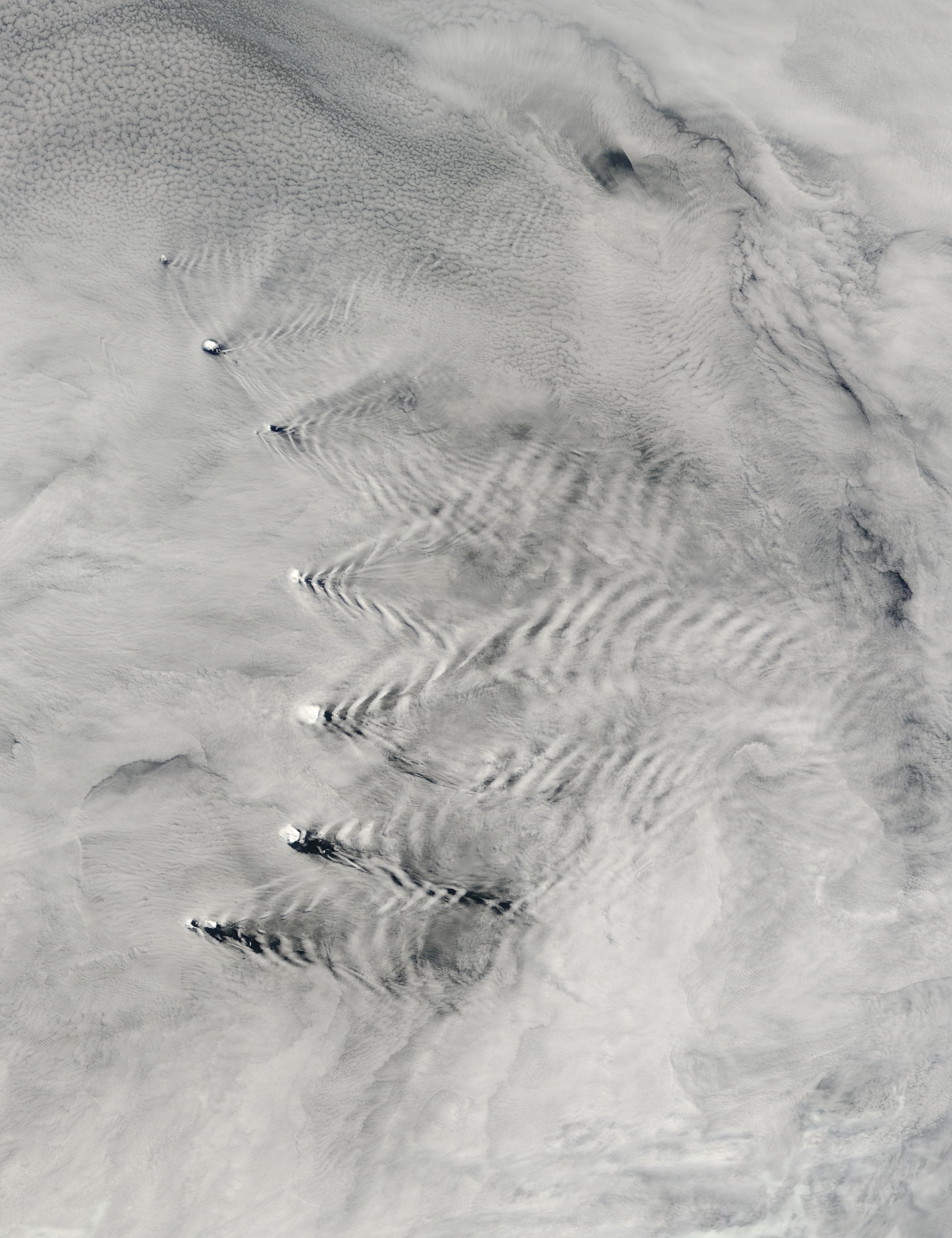Ocean internal waves and turbulence
Turbulent mixing plays an important role in the oceanic circulation energy balance. Energy is input at large scales from tides and surface wind stresses, and provides the energy required to bring deep, dense water back towards the surface via mixing. Mixing can...
Project status
Content navigation
About
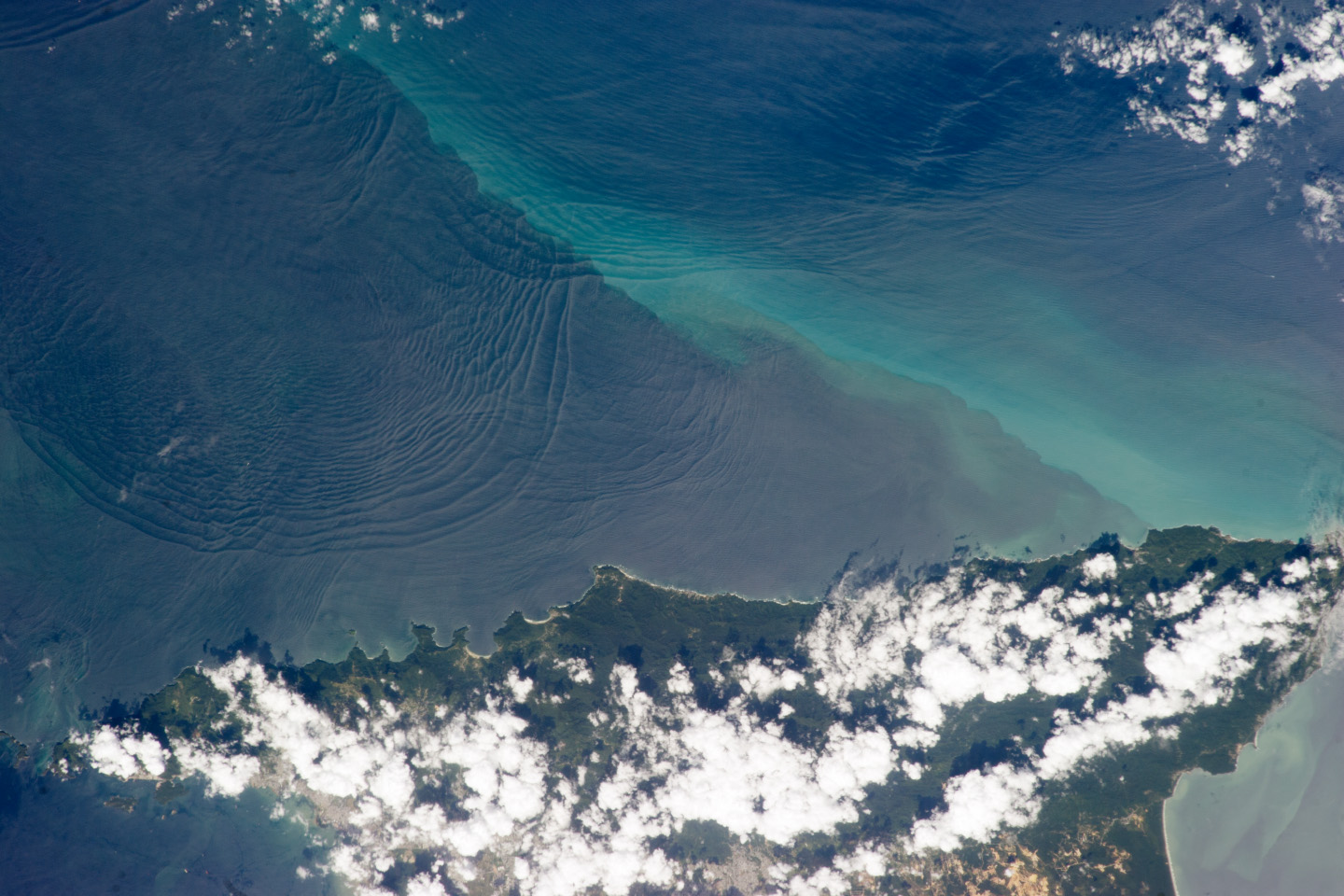
Turbulent mixing plays an important role in the oceanic circulation energy balance. Energy is input at large scales from tides and surface wind stresses, and provides the energy required to bring deep, dense water back towards the surface via mixing. Mixing can occur by a variety of mechanisms. Small-scale mixing driven by breaking internal waves is thought to make a first-order source, especially away from boundaries. Near-boundaries, processes such as shear instabilities associated with turbulent plumes or gravity currents cause significant mixing. This project seeks to improve knowledge of the physics of mixing and thereby enable better parameterisations for the mixing rates in computational models.
The turbulent energy cascade involves such a large range of scales it is impossible with current technology to measure or model numerically the full spectrum of processes in a single experiment. The present project thus uses a variety of methods to investigate different aspects of internal waves, turbulence and mixing. These include:
Ultra-high resolution wave-resolving numerical modelling
The energetics of internal waves are complex. Internal waves can gain energy from other ocean flows and be amplified, but they can also lose energy back to those same flows. Thus, energy going into the wave field is not necessarily contributing to mixing. The below image shows the internal wave, total, and eddying flow fields from an idealised wave-resolving simulation of a sector of the Southern Ocean. We use the simulations to understand the energetics of internal waves.
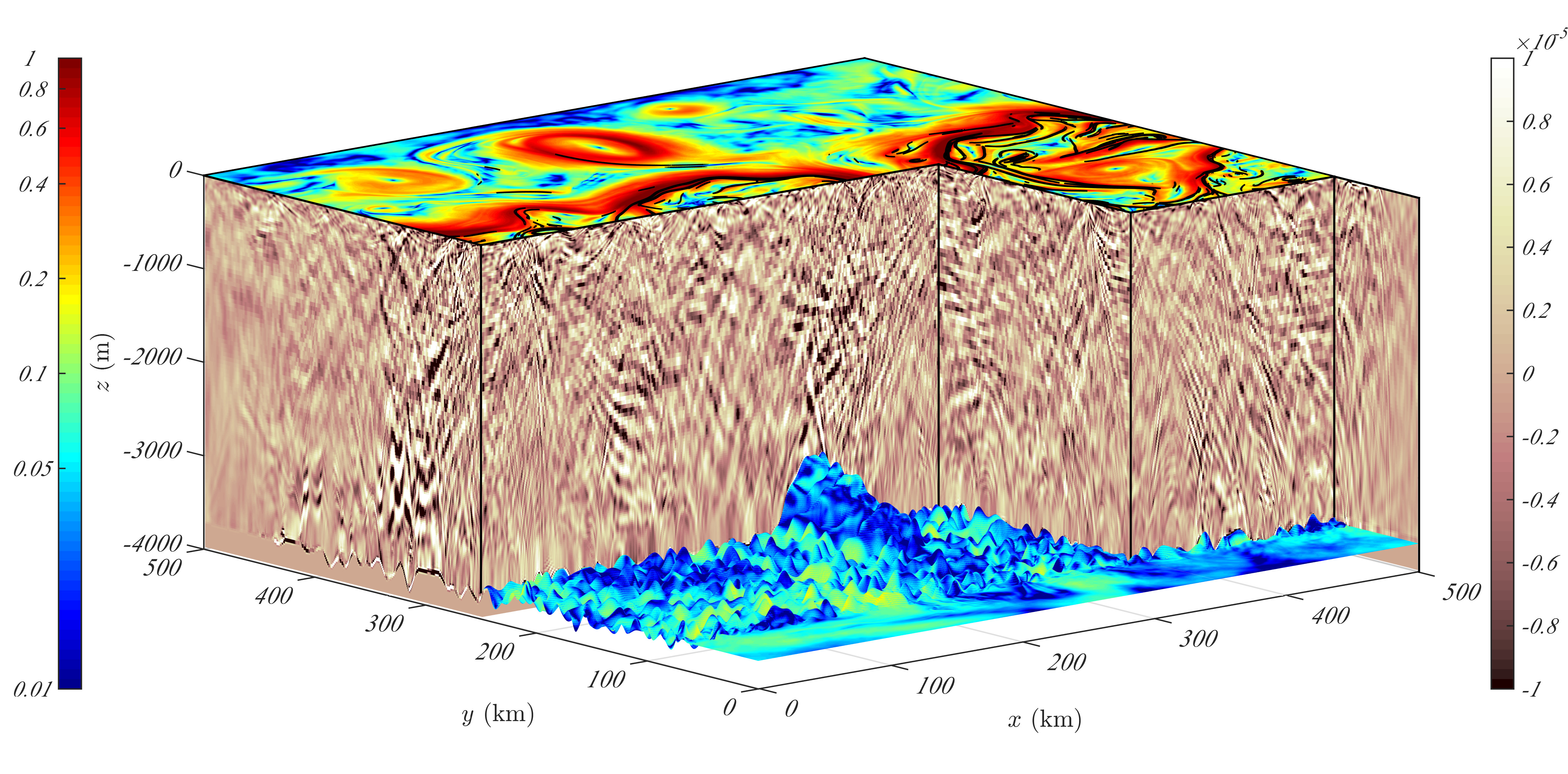
In addition to energy, internal waves carry momentum through the ocean. When they dissipate, the waves impart this momentum to the "mean" flows, forcing the large-scale circulation of the ocean. Numerical simulations in this project have shown that internal waves generated at the ocean bottom are able to force currents and intensify eddy fields at the ocean surface.
Lagrangian Filtering
Quantifying the interactions of internal waves with other flows requires a method of uniquely identifying the internal wave component in flow fields output from numerical simulations. Our group has developed a novel technique for doing this called Lagrangian filtering -- which is now available as a parallelised Python package (see GitHub for the latest version).
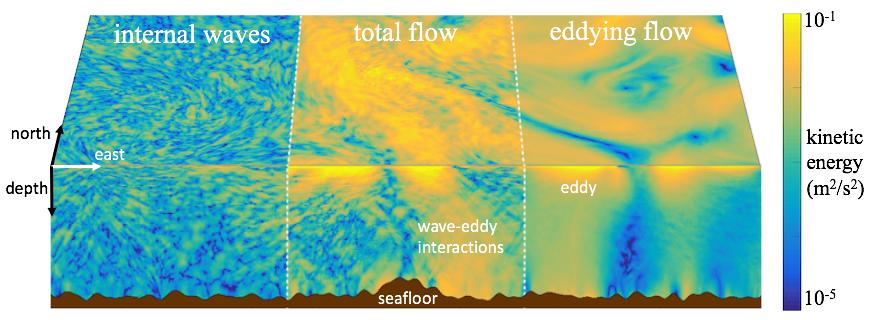
Laboratory experiments
Gravity currents occur when there exists a horizontal gradient in fluid density. The denser fluid will tend to flow under the lighter one, generating turbulence along the interface. The below image from the GFD Lab shows a gravity current flowing off a shelf, and generating intense turbulence and mixing.
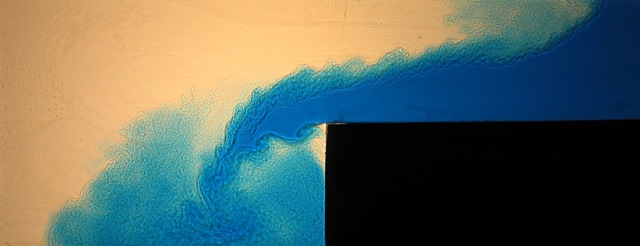
Lee waves and internal tides are generated when fluid is forced to flow vertically into an ambient stratification, usually due to the interaction of a steady horizontal or oscillatory (tidal) flow with topography. For steady flows, the waves tend to stagnate just downstream of the topography and are thus called "lee" waves. In the image below from the GFD Lab, waves are being generated by horizontal flow from left to right over an obstacle (in black). The waves break when their amplitude becomes large enough. This breaking produces a large amount of mixing.

Lee waves are also very common in the atmosphere, especially around mountains. The updrafts and downdrafts of air associated with the waves are often visible as banded cloud structures, as in the below image of the South Sandwich Islands (courtesy of NASA).
